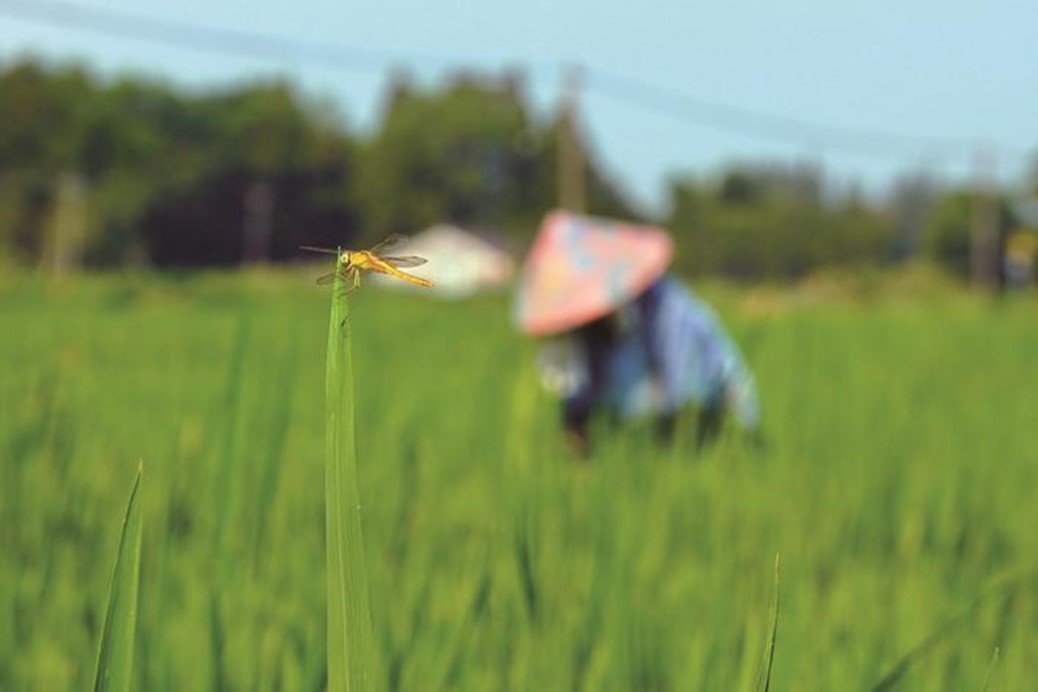Challenges
Jiaxing City of Zhejiang Province, located at 120°18′-121°16′E and 30°21′-31°02′N, has had 33-38 days of high temperature in its inland areas this summer (as of August 11), the second highest number for this period of the year. Scorching heat is expected to continue for the coming 7-10 days, with the highest temperature likely to reach 40-41℃ during the next three days. Heat damage is therefore very likely to occur.
Currently, some single-cropping early-maturing varieties of rice sowed early in the field has entered the mid- and late stages of young panicle differentiation, and young panicle differentiation has also started for mid-maturing varieties. Research shows that Jiayou-Zhongke 3 plants sowed in early June are in the mid-stage of young panicle differentiation and likely to be affected by the high temperature in the coming days. Land plots where the rice plants (Jiayou-Zhongke 3) were sowed on May 11 have reached full heading and a test revealed that the seed setting rate was only about 30%. The loss is therefore expected to be quite heavy and the situation requires high attention from agricultural technology authorities as well as from rice farmers.

Measures
Intensify irrigation and fertilization management
First, the rice field needs to be filled with water to lower temperature at the panicle layer. Rice plants are highly sensitive to temperature when the flag leaf on the main stem is fully exserted (during the meiotic period) and during the flowering period. The seed setting rate will be significantly lower if any temperature above 35℃ occurs during these two periods. Deep irrigation is a must in rice fields and the pattern of deep irrigation for the day and drainage for the night should be adopted if possible, or running water irrigation can be adopted, so as to increase evapotranspiration and lower the temperature at the panicle layer and of the leaves.
Second, fertilization must be carried out in a reasonable manner. Fertilization should be done earlier than usual to expedite tillering, lower the nitrogen content in the leaves in the late reproductive period, speed up reproduction, and build the rice plants’ drought tolerance and heat resistance.
Third, additional fertilizer should be applied except at the roots. Phosphorus and potassium fertilizers (e.g. 3% solution of calcium superphosphate or 0.2% solution of potassium dihydrogen phosphate, or 0.1% liquid boron plus 0.2% potassium dihydrogen phosphate solution) need to be sprayed two or three times on the surface of the leaves so as to significantly increase the plants' resistance to high temperature and reduce heat damage.
Shift to other crops
Where the heat damage is severe and rice yield is extremely low, a shift to other plants, such as vegetables, red bean, mung bean, autumn buckwheat, potato, fresh maize, or any other grain or cash crops with a short growing period, is advised. Also, work must start in time for the winter planting of oilseed rape, wheat and other crops. Ratooning is also an option, but the decision must be made after sufficient feasibility evaluation.
Step up efforts in agricultural extension
Local agricultural extension departments shall provide technical guidance in a timely manner, deliver information on relevant technical measures through all possible channels, and enhance communication with insurance companies to make early decisions and timely responses, so as to help rice farmers minimize financial loss.
Category
Emergency Response to Rice Heat Damage
Contributor
Emergency Response to Rice Heat Damage
Country
Technical Solution

